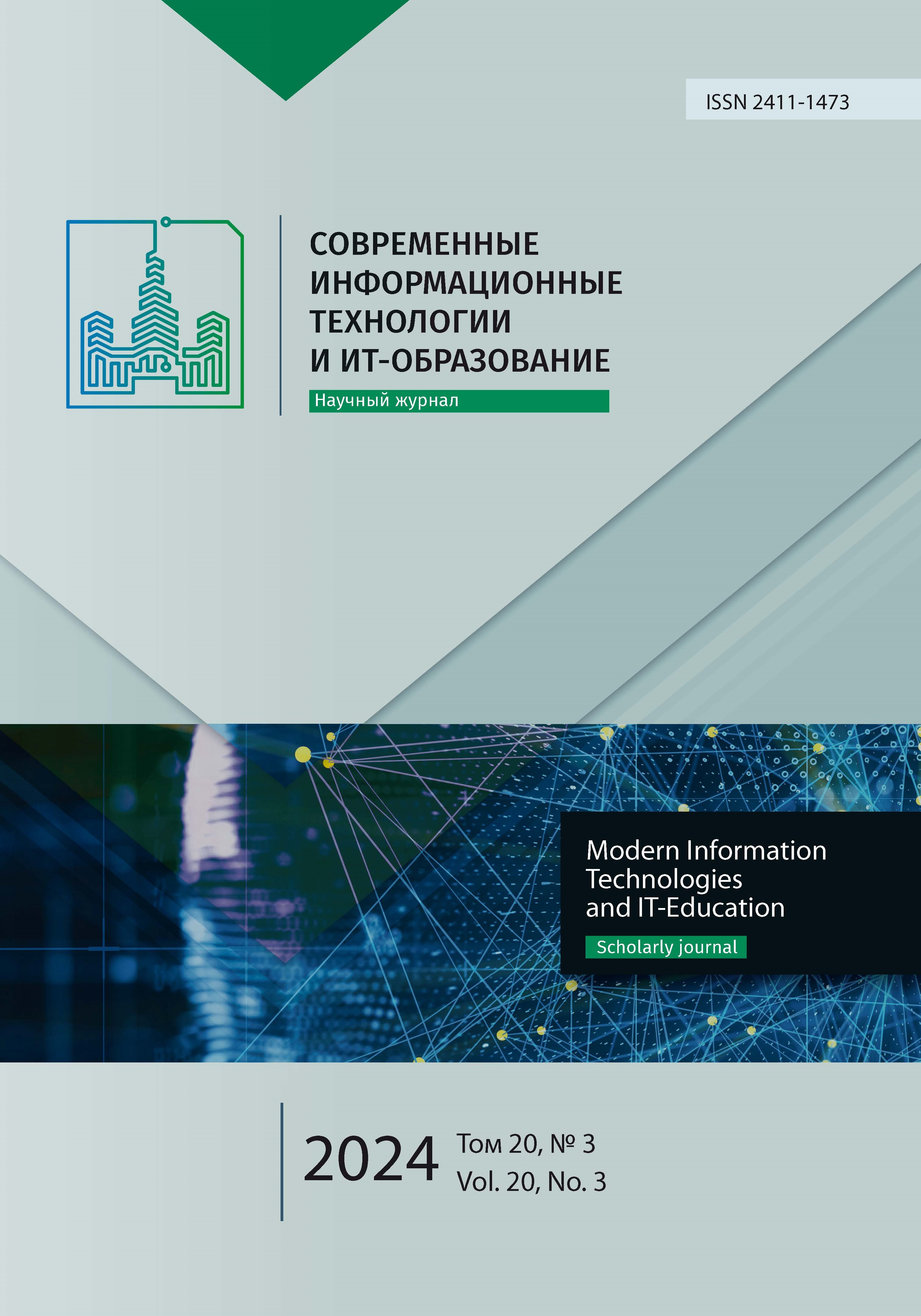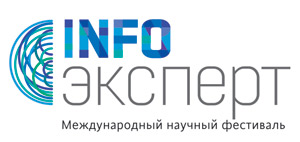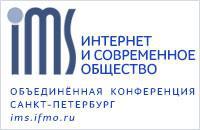Применение векторных операций с динамической длиной для эффективной эмуляции векторных операций с фиксированной длиной
Аннотация
Использование векторных регистров — один из наиболее эффективных способов повышения производительности процессора, особенно в задачах, связанных с параллельной обработкой данных. Для обеспечения переносимости кода между различными архитектурами разработчики часто прибегают к использованию сторонних библиотек, которые абстрагируют архитектурно-зависимые векторные операции через высокоуровневые конструкции языка программирования. Однако создание прозрачных обёрток над базовыми типами данных требует глубокого понимания как особенностей библиотеки, так и архитектурных отличий векторных расширений. Это особенно важно при портировании на новые платформы, такие как RISC-V, где принципы работы с векторами могут существенно отличаться от других архитектур.
В статье рассматриваются существующие библиотеки для создания обобщённых векторных алгоритмов и предлагаются решения для добавления поддержки векторного расширения RISC-V в активно развивающуюся библиотеку EVE. Несмотря на наличие в EVE поддержки масштабируемой векторизации через SVE, интеграция RISC-V требует решения ряда дополнительных задач. Основной вызов — эффективное использование уникальных особенностей RISC-V, таких как группировка нескольких векторных регистров, а также адаптация существующих возможностей библиотеки для работы с новыми аппаратными особенностями, включая ограниченные операции над векторами, которые недоступны на уровне архитектуры.
Литература
2. Gordon A. A quick overview of OpenMP for multi-core programming. Journal of Computing Sciences in Colleges. 2021;28(2):48.
3. Burns R., Davidson C., Dodds A. Enabling OpenCL and SYCL for RISC-V processors. In: Proceedings of the 9th International Workshop on OpenCL (IWOCL '21). New York, NY, USA: Association for Computing Machinery; 2021. Article number: 15. https://doi.org/10.1145/3456669.3456687
4. Hammond J., Dalcin L., Schnetter E., PéRache M., Besnard J.-B., Brown J., Gadeschi G.B., Byrne S., Schuchart J., Zhou H. MPI Application Binary Interface Standardization. In: Proceedings of the 30th European MPI Users' Group Meeting (EuroMPI '23). New York, NY, USA: Association for Computing Machinery; 2023. Article number: 1. https://doi.org/10.1145/3615318.3615319
5. Ijaz M., Saleem F., Shahid U., Waheed S., Coulon J.-R. Implementation and Performance Evaluation of Bit Manipulation Extension on CVA6 RISC-V. In: Proceedings of the 20th ACM International Conference on Computing Frontiers (CF '23). New York, NY, USA: Association for Computing Machinery; 2023. p. 385-386. https://doi.org/10.1145/3587135.3591439
6. Zhong D., Cao Q., Bosilca G., Dongarra J. Using Advanced Vector Extensions AVX-512 for MPI Reductions. In: Proceedings of the 27th European MPI Users' Group Meeting (EuroMPI/USA '20). New York, NY, USA: Association for Computing Machiner; 2020. p. 1-10. https://doi.org/10.1145/3416315.3416316
7. Lin K.-K., et al. Rewriting and Optimizing Vector Length Agnostic Intrinsics from Arm SVE to RVV. In: Workshop Proceedings of the 53rd International Conference on Parallel Processing (ICPP Workshops '24). New York, NY, USA: Association for Computing Machinery; 2024. p. 38-47. https://doi.org/10.1145/3677333.3678151
8. Estérie P., Falcou J., Gaunard M., Lapresté J.-T. Boost.SIMD: generic programming for portable SIMDization. In: Proceedings of the 2014 Workshop on Programming models for SIMD/Vector processing (WPMVP '14). New York, NY, USA: Association for Computing Machinery; 2014. p. 1-8. https://doi.org/10.1145/2568058.2568063
9. Krzikalla O., Zitzlsberger G. Code vectorization using Intel Array Notation. In: Proceedings of the 3rd Workshop on Programming Models for SIMD/Vector Processing (WPMVP '16). New York, NY, USA: Association for Computing Machinery; 2016. Article number: 6. https://doi.org/10.1145/2870650.2870655
10. Yzelman A.N. Generalised vectorisation for sparse matrix: vector multiplication. In: Proceedings of the 5th Workshop on Irregular Applications: Architectures and Algorithms (IA3 '15). New York, NY, USA: Association for Computing Machinery; 2015. Association for Computing Machinery, 6. https://doi.org/10.1145/2833179.2833185
11. Islam M.A., Kise K. Resource-efficient RISC-V Vector Extension Architecture for FPGA-based Accelerators. In: Proceedings of the 13th International Symposium on Highly Efficient Accelerators and Reconfigurable Technologies (HEART '23). New York, NY, USA: Association for Computing Machinery; 2024. p. 78-85. https://doi.org/10.1145/3597031.3597047
12. Gupta S.R., Papadopoulou N., Pericàs M. Challenges and Opportunities in the Co-design of Convolutions and RISC-V Vector Processors. In: Proceedings of the SC '23 Workshops of The International Conference on High Performance Computing, Network, Storage, and Analysis (SC-W '23). New York, NY, USA: Association for Computing Machinery; 2023. p. 1550-1556. https://doi.org/10.1145/3624062.3624232
13. Guan X., et al. PresCount: Effective Register Allocation for Bank Conflict Reduction. In: Proceedings of the 2024 IEEE/ACM International Symposium on Code Generation and Optimization (CGO '24). IEEE Press; 2024. p. 170-181. https://doi.org/10.1109/CGO57630.2024.10444841
14. Krause P.K. The complexity of register allocation. Discrete Applied Mathematics. 2014;168:51-59. https://doi.org/10.1016/j.dam.2013.03.015
15. Tian X., et al. Compiling C/C++ SIMD Extensions for Function and Loop Vectorizaion on Multicore-SIMD Processors. In: 2012 IEEE 26th International Parallel and Distributed Processing Symposium Workshops & PhD Forum. Shanghai, China: IEEE Press; 2012. p. 2349-2358. https://doi.org/10.1109/IPDPSW.2012.292
16. Brankovic S., Markovic A., Simic D., Rikalo A. Improving performance of sorting small arrays on MIPS CPUs using bitonic sort and SIMD instructions. In: 2019 27th Telecommunications Forum (TELFOR). Belgrade, Serbia: IEEE Press; 2019. p. 1-4. https://doi.org/10.1109/TELFOR48224.2019.8971325
17. Keliris A., Maniatakos M. Investigating large integer arithmetic on Intel Xeon Phi SIMD extensions. In: 2014 9th IEEE International Conference on Design & Technology of Integrated Systems in Nanoscale Era (DTIS). Santorini, Greece: IEEE Press; 2014. p. 1-6. https://doi.org/10.1109/DTIS.2014.6850661
18. Edamatsu T., Takahashi D. Efficient Large Integer Multiplication with Arm SVE Instructions. In: Proceedings of the International Conference on High Performance Computing in Asia-Pacific Region (HPCAsia '23). New York, NY, USA: Association for Computing Machinery; 2023. p. 9-17. https://doi.org/10.1145/3578178.3578193
19. Wang J., Hu Y. Enabling Efficient SIMD Acceleration for Virtual Radio Access Network. In: Proceedings of the 50th International Conference on Parallel Processing (ICPP '21). New York, NY, USA: Association for Computing Machinery; 2021. Article number: 63. https://doi.org/10.1145/3472456.3472477
20. Shih M.-S., et al. Register-Pressure Aware Predicator for Length Multiplier of RVV. In: Workshop Proceedings of the 51st International Conference on Parallel Processing (ICPP Workshops '22). New York, NY, USA: Association for Computing Machinery; 2023. Article number: 10. https://doi.org/10.1145/3547276.3548513
21. Lai H.-M., Lee J.-K. Efficient Support of the Scan Vector Model for RISC-V Vector Extension. In: Workshop Proceedings of the 51st International Conference on Parallel Processing (ICPP Workshops '22). New York, NY, USA: Association for Computing Machinery; 2023. Article number: 15. https://doi.org/10.1145/3547276.3548518
22. Hao X., et al. POPA: Expressing High and Portable Performance across Spatial and Vector Architectures for Tensor Computations. In: Proceedings of the 2024 ACM/SIGDA International Symposium on Field Programmable Gate Arrays (FPGA '24). New York, NY, USA: Association for Computing Machinery; 2024. p. 199-210. https://doi.org/10.1145/3626202.3637566
23. Wang H., et al. Simple, portable and fast SIMD intrinsic programming: generic SIMD library. In: Proceedings of the 2014 Workshop on Programming models for SIMD/Vector processing (WPMVP '14). New York, NY, USA: 2014. p. 9-16. https://doi.org/10.1145/2568058.2568059
24. Falcou J., Sérot J. EVE, an Object Oriented SIMD Library. In: Bubak M., van Albada G.D., Sloot P.M.A., Dongarra J. (Eds.) Computational Science ICCS 2004. ICCS 2004. Lecture Notes in Computer Science. Vol. 3038. Berlin, Heidelberg: Springer; 2004. p. 314-321. https://doi.org/10.1007/978-3-540-24688-6_43
25. Bramas B. Inastemp: A Novel Intrinsics-as-Template Library for Portable SIMD-Vectorization. Scientific Programming. 2017;2017(1):5482468. https://doi.org/10.1155/2017/5482468

Это произведение доступно по лицензии Creative Commons «Attribution» («Атрибуция») 4.0 Всемирная.
Редакционная политика журнала основывается на традиционных этических принципах российской научной периодики и строится с учетом этических норм работы редакторов и издателей, закрепленных в Кодексе поведения и руководящих принципах наилучшей практики для редактора журнала (Code of Conduct and Best Practice Guidelines for Journal Editors) и Кодексе поведения для издателя журнала (Code of Conduct for Journal Publishers), разработанных Комитетом по публикационной этике - Committee on Publication Ethics (COPE). В процессе издательской деятельности редколлегия журнала руководствуется международными правилами охраны авторского права, нормами действующего законодательства РФ, международными издательскими стандартами и обязательной ссылке на первоисточник.
Журнал позволяет авторам сохранять авторское право без ограничений. Журнал позволяет авторам сохранить права на публикацию без ограничений.
Издательская политика в области авторского права и архивирования определяются «зеленым цветом» в базе данных SHERPA/RoMEO.
Все статьи распространяются на условиях лицензии Creative Commons «Attribution» («Атрибуция») 4.0 Всемирная, которая позволяет другим использовать, распространять, дополнять эту работу с обязательной ссылкой на оригинальную работу и публикацию в этом журналe.













